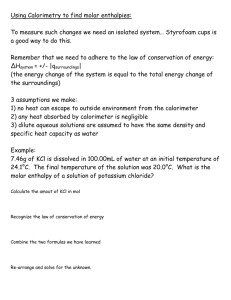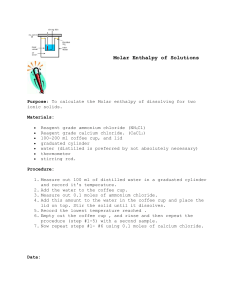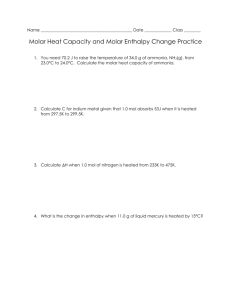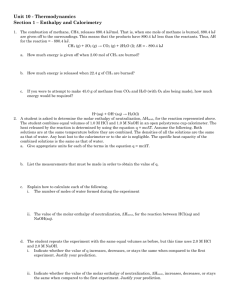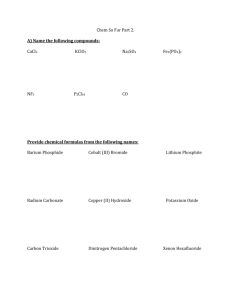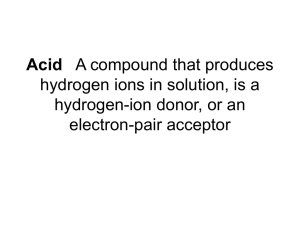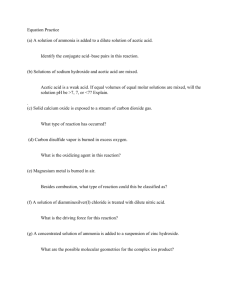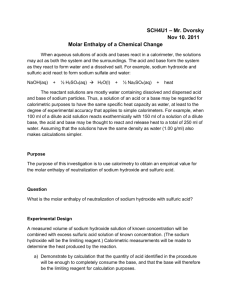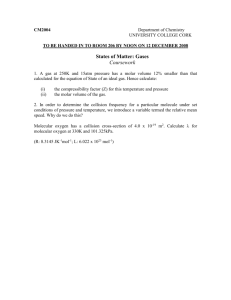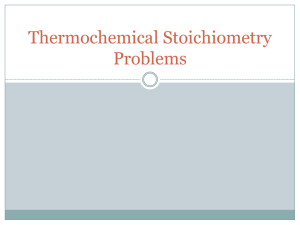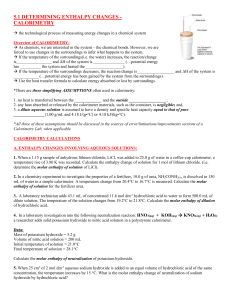Molar Enthalpy of Solution Lab Worksheet
advertisement
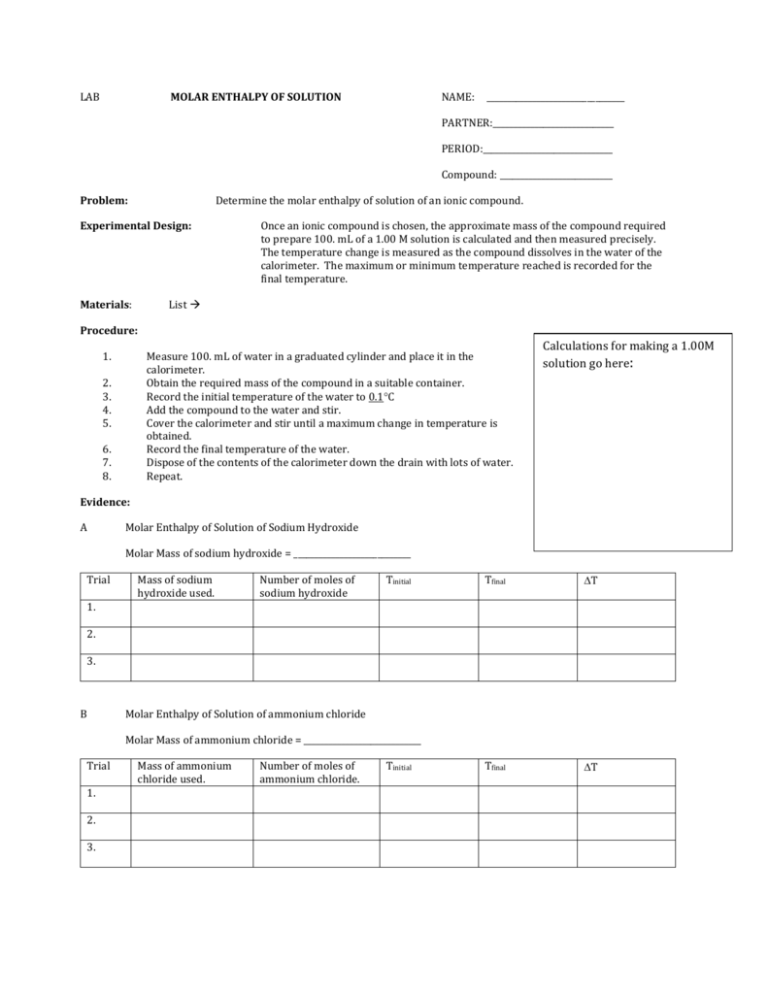
LAB MOLAR ENTHALPY OF SOLUTION NAME: _________________________________ PARTNER:_____________________________ PERIOD:_______________________________ Compound: ___________________________ Problem: Determine the molar enthalpy of solution of an ionic compound. Experimental Design: Materials: Once an ionic compound is chosen, the approximate mass of the compound required to prepare 100. mL of a 1.00 M solution is calculated and then measured precisely. The temperature change is measured as the compound dissolves in the water of the calorimeter. The maximum or minimum temperature reached is recorded for the final temperature. List Procedure: 1. Measure 100. mL of water in a graduated cylinder and place it in the calorimeter. Obtain the required mass of the compound in a suitable container. Record the initial temperature of the water to 0.1C Add the compound to the water and stir. Cover the calorimeter and stir until a maximum change in temperature is obtained. Record the final temperature of the water. Dispose of the contents of the calorimeter down the drain with lots of water. Repeat. 2. 3. 4. 5. 6. 7. 8. Calculations for making a 1.00M solution go here: Evidence: A Molar Enthalpy of Solution of Sodium Hydroxide Molar Mass of sodium hydroxide = ____________________________ Trial Mass of sodium hydroxide used. Number of moles of sodium hydroxide Tinitial Tfinal T Tfinal T 1. 2. 3. B Molar Enthalpy of Solution of ammonium chloride Molar Mass of ammonium chloride = ____________________________ Trial 1. 2. 3. Mass of ammonium chloride used. Number of moles of ammonium chloride. Tinitial For your compound either A or B: Analysis: 1. Determine the molar enthalpy of solution for your solute in each trial. 1 2 2. 3 Determine the average molar enthalpy of solution for your solute. H= ___________________________ 3. State whether the reaction you performed was exothermic or endothermic. 4. Write the balanced, dissociation equation, including states and the energy term for each of the solutes. 5. The actual molar enthalpies of solution for sodium hydroxide and ammonium chloride are as follows: (your teacher will provide these, the students with the most accurate results will receive a prize!!!! ) A B HNaOH = ________________________ HNH4Cl = ______________________ Calculate your experimental error and List two sources of error that could have affected your results. Evaluation: 1. What assumptions accompany the use of a calorimeter? 2. Are your results precise? Are your results accurate? Discuss.
